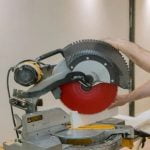What are bow ties in woodworking and how do they play a crucial role in strengthening wood? Bow ties, also known as butterfly or dovetail keys, are small, decorative devices that are used to reinforce joints, repair cracks, and add a unique aesthetic element to woodworking projects. In this article, we will explore the significance of bow ties in woodworking and provide insight into their history, types, applications, selection, installation, and tips for working with them.
The use of bow ties in woodworking has a rich history that dates back centuries. From their origins as functional reinforcements to their evolution as decorative elements, bow ties have played an integral role in enhancing the strength and beauty of wooden structures. Understanding the history of bow ties provides valuable context for their continued importance in modern woodworking practices.
In addition to delving into the historical significance of bow ties in woodworking, this article will also cover the different types of bow ties available, including butterfly, dovetail, and keyhole variations. Furthermore, we will explore their diverse applications in woodworking projects and provide guidance on selecting the right type of bow tie for specific wood types and project requirements.
The History of Bow Ties in Woodworking
Origins of Bow Ties
The use of bow ties in woodworking can be traced back to ancient Japanese joinery techniques, where craftsmen used wooden dowels to repair and reinforce cracked or weakened wood. Over time, this method evolved into what is now known as the butterfly or bow tie joint, which consists of a small, decorative wooden inlay shaped like a butterfly or bow tie.
Evolution of Bow Ties
As woodworking techniques advanced and diversified across different cultures and regions, so too did the use and design of bow ties. From traditional dovetail bow ties to modern keyhole bow ties, craftsmen have continuously innovated and adapted these small wooden pieces to suit various woodworking applications. The evolution of bow ties in woodworking reflects not only changes in technique and style but also the timeless appeal of using natural materials to enhance and preserve woodwork.
Today, the history of bow ties in woodworking serves as a testament to the enduring nature of craftsmanship and innovation. Whether it’s repairing cracks, reinforcing joints, or adding decorative elements to furniture and structures, the legacy of bow ties lives on through their continued relevance in the art and practice of woodworking.
Types of Bow Ties
In woodworking, bow ties are commonly used to reinforce wood and prevent its splitting or cracking. There are different types of bow ties used in woodworking, each with its unique characteristics and applications. The most common types of bow ties include butterfly, dovetail, and keyhole.
- Butterfly Bow Ties: Also known as Dutchman joints, butterfly bow ties are typically used to repair small cracks and splits in wood. They consist of two pieces of wood in the shape of a butterfly with wings that spread out from the center. Butterfly bow ties are often chosen for their decorative appeal as they can add an artistic element to the repaired wood.
- Dovetail Bow Ties: Dovetail bow ties are shaped like the dovetail joint in traditional woodworking. They are often used to reinforce miter joints and hold them together firmly. Dovetail bow ties provide excellent strength and stability, making them suitable for larger woodworking projects such as tabletops or countertops.
- Keyhole Bow Ties: Keyhole bow ties feature a round or oval-shaped design with one or more keyhole slots. These slots allow for expansion and contraction of the wood due to changes in temperature and humidity. Keyhole bow ties are frequently used in large panel glue-ups where movement of the wood is expected.
Each type of bow tie has its advantages and is selected based on the specific requirements of the woodworking project at hand.
| Type | Applications |
|---|---|
| Butterfly | Repairing small cracks and adding decorative elements |
| Dovetail | Reinforcing miter joints for larger woodworking projects |
| Keyhole | Allowing for movement in large panel glue-ups |
Applications of Bow Ties in Woodworking
Bow ties in woodworking are versatile and can be used in various ways to enhance the structural integrity and aesthetic appeal of wood projects. One of the primary applications of bow ties is in repairing cracks in wooden surfaces.
When a piece of wood develops a crack due to natural wear and tear or environmental factors, bow ties can be used to stabilize the area and prevent further splitting. The bow tie is carefully fitted into the crack and secured, effectively reinforcing the damaged wood.
In addition to repairing cracks, bow ties are also commonly used to reinforce joints in woodworking. Whether it’s a table, chair, or cabinet, joints are vulnerable areas that may experience stress over time. By strategically placing bow ties at joints, woodworkers can add strength and durability to their creations. This not only prevents potential breakage but also adds a decorative touch to the overall design.
Furthermore, bow ties can serve as decorative elements in woodworking projects. When crafted from contrasting woods or unique materials, such as metal or resin, bow ties can create visually striking accents that enhance the beauty and character of furniture pieces, countertops, flooring, and other wooden structures.
Overall, understanding the diverse applications of bow ties in woodworking allows craftspeople to leverage this technique for both functional and aesthetic purposes.
| Applications | Examples |
|---|---|
| Repairing Cracks | Stabilizing cracked wooden surface using bow ties |
| Reinforcing Joints | Adding strength and durability at vulnerable joint areas |
| Adding Decorative Elements | Incorporating visually striking accents into woodworking projects |
Choosing the Right Bow Tie for Your Project
When it comes to woodworking, choosing the right bow tie for your project is essential to ensure that it serves its purpose effectively and complements the overall design. There are several factors to consider when selecting the appropriate bow tie based on the type of wood and project at hand.
Wood Type
The type of wood you are working with will greatly influence the selection of the bow tie. Different woods have varying densities, grains, and characteristics that can affect how they respond to stress and movement. For example, softer woods may require a different type of bow tie compared to harder woods in order to provide adequate reinforcement.
Project Requirements
Consider the specific requirements of your woodworking project when choosing a bow tie. Are you repairing a crack, reinforcing a joint, or adding a decorative element? Each scenario may require a different type of bow tie to achieve the desired outcome. Understanding the specific needs of your project will help you narrow down your options and make an informed decision.
Size and Aesthetic
In addition to functionality, the size and aesthetic appeal of the bow tie should also be taken into account. The size of the bow tie should be proportionate to the size of the wood piece it is intended for, while also complementing the overall design. Whether you opt for a traditional butterfly design or a more intricate dovetail pattern, it’s important that the chosen bow tie enhances the visual appeal of your woodworking project.
Considering these key factors when choosing a bow tie for your woodworking project will ensure that it not only serves its practical purpose but also adds visual interest and strength to your creation. By understanding how different types of wood and project requirements align with specific bow ties, you can make an informed decision that contributes to the success of your woodworking endeavor.
How to Install Bow Ties
When it comes to woodworking, the proper installation of bow ties is crucial for ensuring their effectiveness in strengthening wood and adding decorative elements to the project. Whether you are repairing cracks, reinforcing joints, or simply enhancing the aesthetic appeal of your work, knowing how to install bow ties correctly is essential. Below is a step-by-step guide on how to properly install bow ties in woodworking projects, including the tools and techniques required.
Tools Needed:
Steps:
1. Preparation: Start by preparing the area where the bow tie will be installed. This may involve cleaning out any debris or loose wood from cracks or joints.
2. Create a Template: Use a bow tie template to trace the outline onto the wood where you will be installing the bow tie. This will serve as a guide for cutting out the shape.
3. Cut Out the Bow Tie: Use a chisel or router to carefully cut out the shape of the bow tie from the wood. Take your time and make precise cuts to ensure a proper fit.
4. Create a Mortise: Using a drill and chisel, create a mortise on the surface where the bow tie will be inserted. The mortise should match the size and shape of the bow tie being installed.
5. Test Fitting: Before applying any glue, do a test fitting of the bow tie in the mortise to ensure that it fits snugly and aligns with the surrounding wood.
6. Apply Glue: Once confirmed, apply wood glue to both the mortise and the back of the bow tie before inserting it into place.
7. Secure with Clamps: Use clamps to secure the bow tie in place while allowing it to dry properly.
8. Finishing Touches: Once dry, use sandpaper to smooth out any rough edges and ensure that the surface is level and flush.
By following these steps and using appropriate tools and techniques, you can effectively install bow ties in your woodworking projects while ensuring durability and visual appeal.
Tips and Tricks for Working With Bow Ties
When working with bow ties in woodworking, it’s essential to have a good understanding of the best practices and techniques to achieve a professional finish. Here are some practical tips and strategies to consider when integrating bow ties into your woodworking projects:
- Properly Assessing Wood: Before incorporating bow ties into your woodworking project, thoroughly assess the condition of the wood. Look for any cracks, splits, or weaknesses that need reinforcing, and determine the appropriate size and type of bow tie to use for each specific area.
- Choosing the Right Bow Tie Orientation: When installing bow ties, it’s crucial to consider the orientation of the grain pattern. Aligning the grain direction of the bow tie with that of the wood will provide optimal strength and stability. This simple yet critical step can significantly enhance the effectiveness of the bow tie in reinforcing joints or repairing cracks.
- Precision in Cutting: Accuracy is key when cutting out the recesses for installing bow ties. Use precision tools such as chisels or routers to ensure clean and precise cuts that perfectly accommodate the bow tie. Taking time and care at this stage will result in a seamless integration of the bow tie into the wood surface.
- Finishing Techniques: Pay attention to finishing techniques when working with bow ties. It’s important to blend or match the color and texture of the wood surrounding the bow tie to create a cohesive appearance. Sanding, staining, or applying a clear finish can help achieve a uniform look that seamlessly integrates the bow tie into the overall aesthetic of your woodworking project.
By following these tips and strategies while working with bow ties in woodworking, you’ll be able to avoid common mistakes and achieve a professional finish that not only enhances structural integrity but also adds an element of craftsmanship to your creations.
The Future of Bow Ties in Woodworking
In conclusion, the future of bow ties in woodworking looks promising with modern innovations and advancements in bow tie techniques. As woodworking continues to evolve, so do the methods and tools used to strengthen and enhance woodwork. The use of bow ties has expanded beyond just practical reinforcement, with artisans incorporating them into their designs as decorative elements. This creative approach to using bow ties adds a unique and artistic touch to woodworking projects.
With technological advancements, such as CNC machines and 3D printing, the possibilities for creating intricate and precise bow tie designs are endless. These innovations have also made it easier for woodworkers to customize and experiment with different shapes and sizes of bow ties. Furthermore, the use of new materials like carbon fiber and metal alloys has expanded the potential applications of bow ties in woodworking, including in contemporary furniture design and architectural structures.
As we look ahead, it is clear that bow ties will continue to play a significant role in woodworking craftsmanship. Whether it is in repairing cracks, reinforcing joints, or adding decorative flair, the versatility of bow ties ensures that they will remain an integral part of any woodworker’s toolkit.
As new techniques and materials emerge, woodworkers can expect to see even more innovative ways to integrate bow ties into their projects. The future of bow ties in woodworking holds endless possibilities for both functional strength and aesthetic appeal.
Frequently Asked Questions
What Is the Purpose of a Bow Tie?
The purpose of a bow tie is mainly decorative. It adds a stylish touch to formal attire, such as tuxedos or suits. Bow ties can also be worn in more casual settings to make a fashion statement.
Why Bowtie Woodworking?
Bowtie Woodworking is a technique used to reinforce and stabilize wood joints, especially when there are cracks, splits, or other imperfections in the wood. It adds both structural support and aesthetic appeal to woodworking projects.
When Would You Use a Bow Tie?
A bow tie can be used in woodworking when joining two separate pieces of wood together in a way that provides additional strength and stability. This is especially useful when working with live edge or reclaimed wood where cracks or voids need to be filled and reinforced.

Hi everyone! I’m a woodworker and blogger, and this is my woodworking blog. In my blog, I share tips and tricks for woodworkers of all skill levels, as well as project ideas that you can try yourself.





